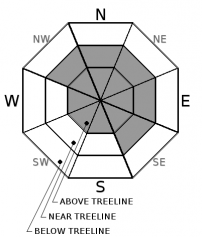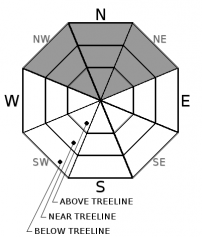| Monday | Monday Night | Tuesday | |
|---|---|---|---|
| Weather: | Sunny becoming partly cloudy in the afternoon | Mostly cloudy becoming partly cloudy after midnight | Partly Cloudy |
| Temperatures: | 37 to 42 deg. F. | 21 to 27 deg. F. | 42 to 47 deg. F. |
| Mid Slope Winds: | Variable | Variable | Southwest |
| Wind Speed: | Light | Light | Light increasing to 10 to 15 mph with gusts to 35 mph in the afternoon |
| Expected snowfall: | 0 | 0 | 0 |
| Monday | Monday Night | Tuesday | |
|---|---|---|---|
| Weather: | Sunny becoming partly cloudy in the afternoon | Mostly cloudy becoming partly cloudy after midnight | Partly Cloudy |
| Temperatures: | 36 to 41 deg. F. | 26 to 31 deg. F. | 39 to 45 deg. F. |
| Ridge Top Winds: | West | Northwest | West |
| Wind Speed: | Light with gusts to up to 25 mph | Light increasing to 10 to 15 mph with gusts to 30 mph after midnight | 10 to 15 mph with gusts to 35 mph increasing to 15 to 25 mph with gusts to 50 mph in the afternoon |
| Expected snowfall: | 0 | 0 | 0 |


























